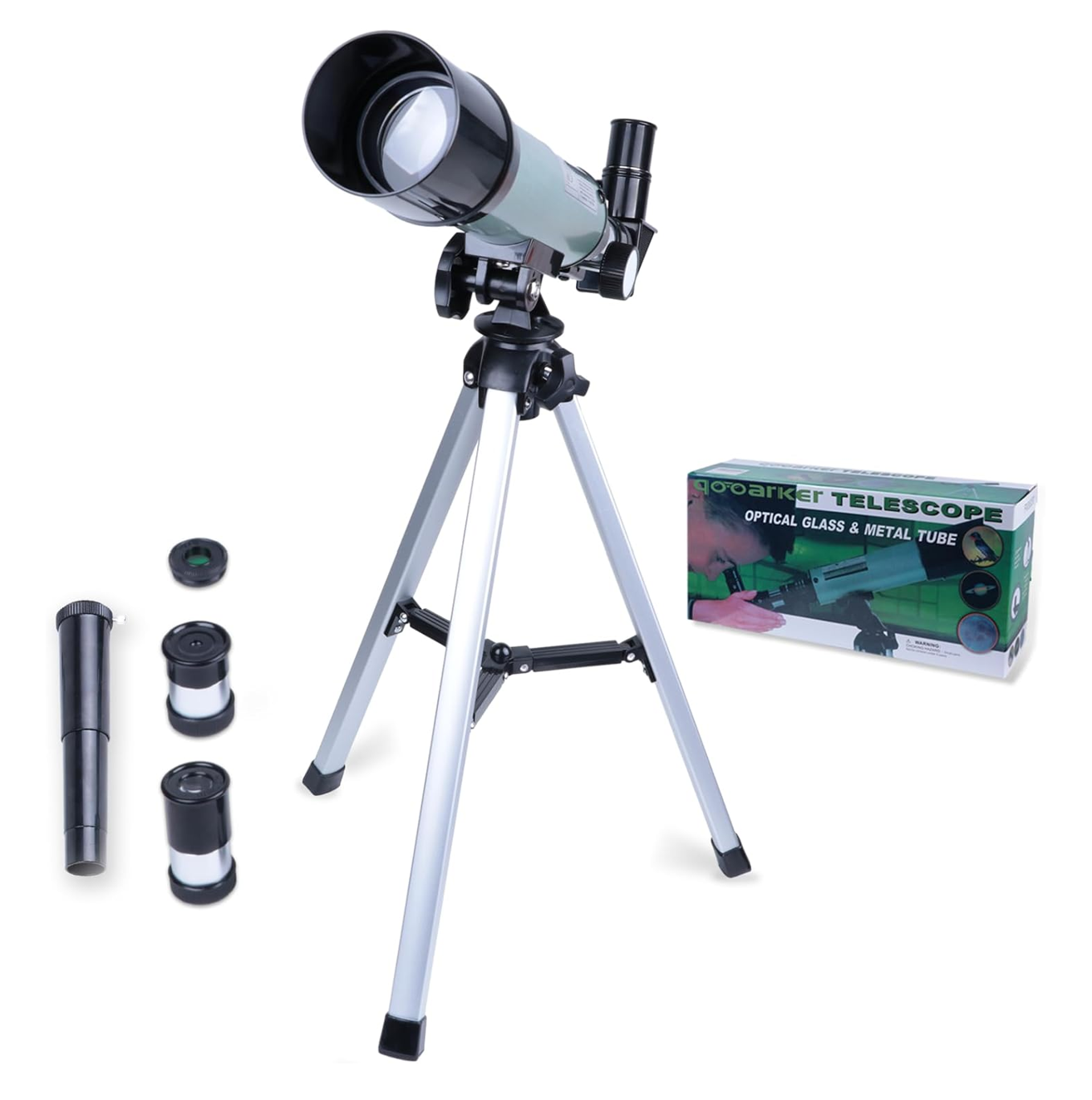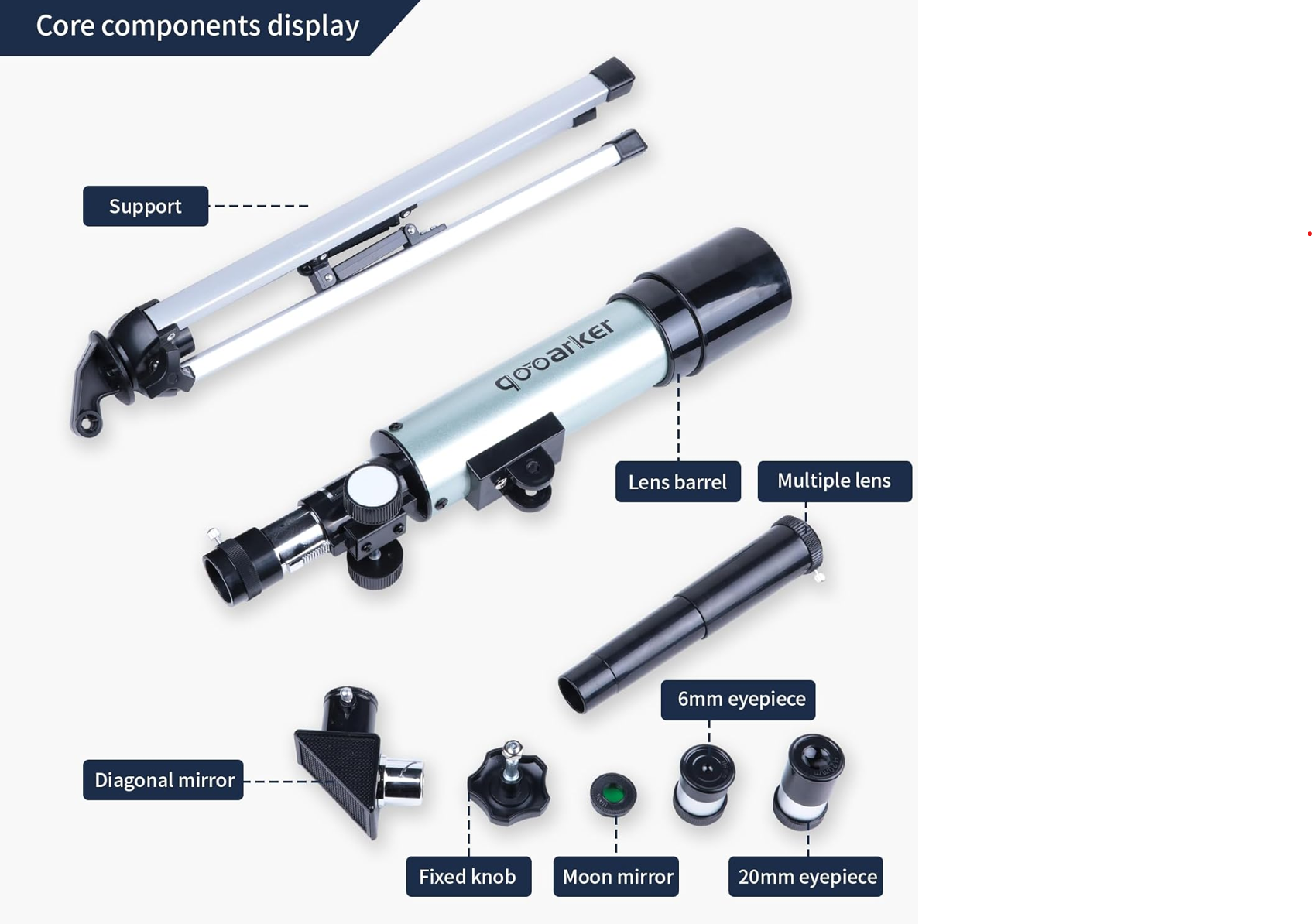Science Toys: Choosing the Right Small Telescope for Kids Aged 4-6
Exploring the universe can spark curiosity in children, and science toys like small telescopes are perfect for this purpose. A children’s telescope, especially designed for ages 4-6, allows young explorers to observe the world around them while fostering a love for science and discovery. These telescopes are often lightweight, durable, and easy to use, making them suitable for little hands and developing minds.
Parents and educators seek tools that enhance learning experiences, and selecting the right telescope can greatly affect a child's interest in the sciences. A suitable telescope for kids not only introduces fundamental concepts of astronomy but also encourages outdoor play and exploration.
Starting with an easy-to-use telescope can ignite a lifelong passion for the stars, planets, and everything in between. Engaging with celestial objects fosters critical thinking and observation skills, providing endless opportunities for learning and adventure.

Selecting the Right Science Toys
Choosing the right science toys is essential for fostering curiosity and learning in children. This process involves evaluating age suitability, safety features, educational benefits, and how engaging the toys are for kids.
Age-Appropriate Considerations
Selecting a science toy should start with considering the child's age. For example, small telescopes designed for kids aged 4-6 should be lightweight, simple to use, and tailored for short attention spans. Toys that target specific age groups usually align better with developmental stages, ensuring that the child can grasp operational concepts and engage fully.
- Key points for age considerations:4-6 years: Look for basic models with large buttons or simple focusing mechanisms.
- 7-10 years: More complex telescopes with advanced features can stimulate interest and understanding.
- 11 and up: Consider models offering greater magnification and interchangeable lenses.
Safety and Durability
Safety is a crucial factor in selecting science toys. Toys should not have sharp edges or small parts that could pose a choking hazard. Materials should be non-toxic and free from harmful chemicals, particularly for younger children.
Durability also plays a significant role, especially for active play. A toy that withstands rough handling reduces the risk of breakage and disappointment.
Essential safety features include:
- Stable construction: Ensures the telescope doesn’t tip over easily.
- Material quality: Opt for ABS plastic or materials that endure outdoor conditions.
- Age labeling: Adhering to safety standards relevant to the child’s age.
Educational Value
Science toys should inherently educate while entertaining. A good telescope does more than provide views of celestial bodies; it opens a dialogue about astronomy, physics, and the natural world. When selecting a toy, one must consider its ability to promote inquiry, creativity, and critical thinking.
Toys with strong educational value include:
- Instructional booklets: Guides children on how to explore and understand their environment.
- Hands-on activities: Encourage experiments and observations that reinforce learning.
- Multimedia resources: Supplementing the toy with apps or websites can greatly enhance knowledge retention.
Playability and Engagement
Engagement with science toys often correlates with their fun factor. The design should captivate the child’s interest, encouraging them to explore further. Toys that promote interaction often lead to longer playtimes and deeper understanding. Interactive features, such as adjustable zoom and light source options in telescopes, allow children to experiment and discover. Factors to enhance playability:
- User-friendly design: A toy that’s easy to operate fosters independence.
- Visual appeal: Bright colors and interesting shapes can attract attention.
- Community experience: Involvement in group activities or challenges can motivate children to engage with science collaboratively.
Telescopes for Beginners

Introducing young learners to telescopes can spark a lifelong interest in astronomy. A beginner telescope provides an accessible way for children to explore the night sky while building essential observational skills.
Small Telescope Features
Small telescopes are designed with user-friendly features that cater to beginners. They offer lightweight construction, making them easy to transport and set up. Common specifications include:
- Aperture: Usually ranges from 50mm to 70mm, allowing for clear views of the moon and bright planets.
- Mount: Many beginner models use a simple altitude-azimuth mount, aiding in straightforward navigation.
- Finderscope: Equipped with a low-power finderscope to assist in locating celestial objects.
These features enhance the user experience, especially for children aged 4-6. For instance, a small telescope suitable for beginners can provide a clear view of lunar craters, which can be an exciting experience. Looking at telescopes designed specifically for novices can lead to discovering fascinating details in the night sky. A model such as this telescope for beginners is a recommended choice for young astronomers.
Benefits of Starting Small
Starting with a small telescope offers several advantages for budding astronomers. For one, it promotes engagement without overwhelming users. A smaller size allows for easier handling, making it suitable for children. Additionally, focusing on the moon and brighter planets helps develop basic skills.
Observing these objects cultivates patience and attention to detail. It's essential for young users to gradually understand how to align and adjust the telescope.
Moreover, affordable small telescopes reduce the initial investment. Parents can provide children with a quality introduction to astronomy without requiring a significant financial commitment. As skills progress, users can later upgrade to more advanced models while maintaining a strong foundational experience.
Introducing Astronomy to Young Children

Introducing astronomy to young children can spark curiosity about the universe. The right tools, such as telescopes designed for small hands, make this learning experience engaging and educational.
Telescopes for Ages 4-6
Telescopes suitable for children aged 4-6 should be easy to set up and use. Many of these models feature simplified mechanics, making them accessible. Key features include:
- Lightweight Design: Easy for children to handle.
- Adjustable Height: Comfortable viewing for different ages.
- Robust Construction: Durable enough to withstand rough handling.
These telescopes often come with colorful aesthetics and engaging themes that attract young learners. They provide an introductory way to observe the moon and bright planets, inspiring children to explore further.
Kid-Friendly Telescope Designs
Kid-friendly telescope designs focus on usability and safety. They typically include features that promote hands-on interaction. Important design elements are:
- Simplified Optics: Clear, child-focused lenses for easy viewing.
- Sturdy Stands: Stability to prevent tipping over.
- User-Friendly Controls: Simple adjustments for tracking celestial objects.
Many models come with educational guides or apps that align with the curiosity and learning pace of young children. This approach enhances the overall experience and fosters a love for space exploration.
Advancing in Astronomical Discovery
Exploring the universe is an exciting journey that begins with understanding telescopes and their functionalities. Knowledge about telescope features and enhancing them with accessories significantly enriches the experience for young astronomers.
Enhancing Telescope Knowledge
Developing a solid understanding of telescopes is critical for young users. A small telescope for kids typically features simple controls and user-friendly designs. Key specifications to consider include magnification power, aperture size, and ease of setup.
- Magnification: This determines how much larger an object appears. A balance is necessary, as too much magnification can lead to shaky views.
- Aperture: Larger apertures allow more light to enter, producing clearer images of faint celestial bodies.
- Stability: Ensuring the telescope has a sturdy mount is essential for steady observing.
Parents can foster this knowledge by encouraging kids to explore different types of telescopes and understand how each model caters to various needs.
Accessories and Upgrades
Adding accessories can greatly enhance the functionality of a basic telescope. These modifications can lead to improved viewing experiences. Some popular upgrades include:
- Barlow lenses: These increase magnification without compromising image quality.
- Filters: Using filters can improve visibility by reducing glare from bright objects like the Moon or planets.
- Stabilizers: Anti-vibration pads or heavier mounts can enhance stability during observation.
Engaging with these accessories teaches children about practical astronomy and expands their observational skills. Investing in quality upgrades helps cultivate a deeper passion for astronomy, encouraging ongoing exploration of the night sky.
Supporting Science Education
Engaging children in science through toys like telescopes can significantly enhance their learning experience. Parental involvement and access to community and online resources play crucial roles in fostering an interest in astronomy and science.
Parental and Educational Support
Parents can contribute greatly to their child's interest in science. They can encourage exploration by facilitating hands-on activities with telescopes, which helps develop critical thinking and observational skills. Creating a routine that includes regular stargazing nights can make astronomy a family affair. Setting aside specific times to observe celestial bodies fosters curiosity and enhances learning.
Educational institutions can support this by integrating astronomy into curriculums. They might organize field trips to planetariums or observatories, enriching classroom lessons with real-world experiences. Additionally, schools can provide resources or after-school programs focused on science. Parents should seek ways to collaborate with educators, ensuring children receive a well-rounded understanding of astronomical concepts.
Community and Online Resources
Communities often offer various programs and resources that support children's science education. Local astronomy clubs typically host events where children can participate in star parties or workshops, which provide practical experience with telescopes.
Libraries may have educational kits or books about astronomy, suitable for children. These resources help make complex topics accessible. Online platforms also offer valuable tools, such as interactive websites and apps that teach about the solar system.
Parents should explore virtual resources such as webinars, online courses, or educational videos that cater to young learners. These materials can supplement traditional learning, ensuring children have diverse opportunities to engage with science at their own pace.